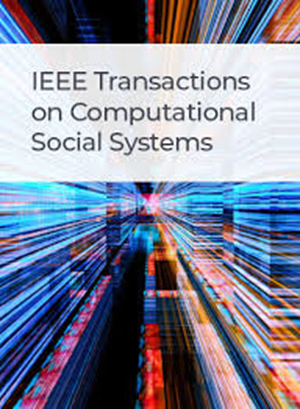Fair Link Prediction With Overlapping Groups
IF 4.5
2区 计算机科学
Q1 COMPUTER SCIENCE, CYBERNETICS
IEEE Transactions on Computational Social Systems
Pub Date : 2024-11-18
DOI:10.1109/TCSS.2024.3479702
引用次数: 0
Abstract
In this article, we introduce FairLPG, a framework for ensuring fairness for the task of link prediction in graphs with具有重叠组的公平链路预测
在本文中,我们介绍了FairLPG,这是一个框架,用于确保具有多个敏感属性的图中链路预测任务的公平性。在图中链接预测的背景下,人口均等和均等几率的公平性概念试图确保由不同节点对组成的不同人口群体之间的平均链接概率和真阳性率相等。现有的实现链路预测公平性的方法只考虑单个敏感属性,这使得它们不适合需要考虑多个敏感属性的应用。此外,在链路预测中考虑多个敏感属性会导致分组重叠和交叉,这进一步增加了框架设计的复杂性。提出的框架FairLPG假设链路预测模型为每个节点对生成一个预测分数以形成一条边,并在公平性约束下,制定一个使原始预测分数与转换分数之间的欧氏距离平方最小的凸优化问题。然后利用转换后的分数进行公平链接预测。据我们所知,这项工作是第一个处理图设置中相交敏感群的情况。为了证明其有效性,我们将FairLPG部署在几个真实世界的数据集和基于图神经网络的链路预测模型上。它在所有数据集和链接预测模型的公平性和预测精度方面优于或优于现有方法,同时计算效率更高。
本文章由计算机程序翻译,如有差异,请以英文原文为准。
求助全文
约1分钟内获得全文
求助全文
来源期刊

IEEE Transactions on Computational Social Systems
Social Sciences-Social Sciences (miscellaneous)
CiteScore
10.00
自引率
20.00%
发文量
316
期刊介绍:
IEEE Transactions on Computational Social Systems focuses on such topics as modeling, simulation, analysis and understanding of social systems from the quantitative and/or computational perspective. "Systems" include man-man, man-machine and machine-machine organizations and adversarial situations as well as social media structures and their dynamics. More specifically, the proposed transactions publishes articles on modeling the dynamics of social systems, methodologies for incorporating and representing socio-cultural and behavioral aspects in computational modeling, analysis of social system behavior and structure, and paradigms for social systems modeling and simulation. The journal also features articles on social network dynamics, social intelligence and cognition, social systems design and architectures, socio-cultural modeling and representation, and computational behavior modeling, and their applications.
 求助内容:
求助内容: 应助结果提醒方式:
应助结果提醒方式:


